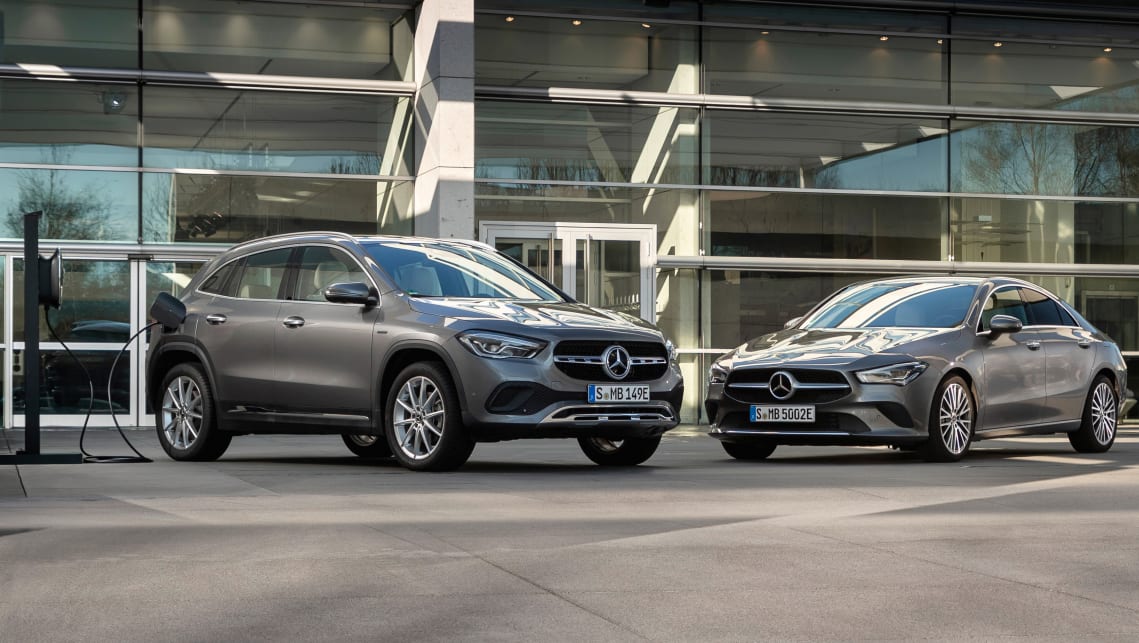
Mercedes explains electrification rollout in Australia
- Mercedes-Benz GLC-Class
- Mercedes-Benz C-Class
- Mercedes-Benz A-Class
- Mercedes-Benz E-Class
- Mercedes-Benz EQ-Class
- Mercedes-Benz EQC
- Mercedes-Benz A-Class 2020
- Mercedes-Benz C-Class 2020
- Mercedes-Benz GLC-CLASS 2020
- Mercedes-Benz E-CLASS 2020
- Mercedes-Benz EQ-Class 2020
- Mercedes-Benz EQC 2020
- Mercedes-Benz News
- Mercedes-Benz Hatchback Range
- Mercedes-Benz Sedan Range
- Mercedes-Benz SUV Range
- Hatchback
- Sedan
- SUV
- Electric Cars
- Mercedes-Benz
- Urban
- Urban News
- Electric Cars
- Green Cars
- Technology

Mercedes-Benz Australia says plug-in hybrids are here to stay in the Australian market, despite some automakers deciding to skip the technology due to lack of demand.
In comments to CarsGuide, Mercedes-Benz head of media relations Jerry Stamoulis explained the choice to go full-steam ahead on plug-in hybrid ‘EQ Power’ variants of its mainline range is important to give customers choice as the brand evolves toward full electrification.
“By offering various levels of electrification, customers will have the choice [of drivetrain] depending on their travel requirements,” he said.
When asked whether the brand had received any indication whether its specific audience base would prefer PHEV over full EV, Mr Stamoulis said it was too early to tell.
“Once all variants go on sale, we will have a better idea of the split,” he said.

Mercedes will have a total of 20 electrified EQ Power variants in international market by the end of 2020, although only four plug-in hybrid variants have already launched or are confirmed to launch in the Australian market.
These include the A250e hatch, C300e mid-size sedan, E300e large sedan, and GLC 300e mid-size SUV. Mercedes also recently launched its first foray into full electrification in Australia with the EQC 400 mid-size SUV.
Mr Stamoulis said these models were chosen from the international line-up as they will appeal to the broadest range of customers who may be considering a PHEV variant.
Mercedes’ choice to go with a roll-out of PHEV variants of its mainline range is in contrast to Volkswagen, who told CarsGuide last year it intends to skip its PHEV models (currently available in Europe and China) altogether in Australia and await its ID range of full-electric alternatives.
At the time, VW cited low demand and consumer uptake of semi-electrified models.
Mercedes says its strategy is to keep consumers in familiar models and gradually introduce electrification technologies. As brand representative Ryan Lewis puts it: “[Mercedes’ PHEV variants] allow customers to experience what an electric vehicle is like without jumping in at the deep end.”
Mercedes’ plug-in hybrid models are notable for their comparatively large electric batteries and, in compact 1.3-litre-powered PHEV models, entirely 48-volt onboard power systems, which the brand says does away with the need to carry a separate 12-volt power system for the starter motor.
Mercedes’ has also said that the choice to run with larger, heavier battery packs and more thoroughly integrated electric systems gives the consumer the choice to run on electric power for most journeys. It says its research concluded that a 50km electric range is sufficient for 90 per cent of all journeys.
The brand's compact 1.3-litre PHEV models are capable of up to 77km electric-only range, while larger longitudinal models are capable of up to 106km of range.
EQ Power also integrates other systems like the car’s GPS and data systems to calculate routes, range, and efficiency based on current traffic and road conditions.

While these features are currently on-market in Europe, Mr Stamoulis said some systems may not be available (at least initially) in Australia as they can be model or market dependent.
Meanwhile, Mercedes has pulled back from the roll-out of further vehicle autonomy, with the brand’s chairman, Ola Kellenius, telling media earlier this year that the focus has instead shifted to making trucks autonomous before cars.










Comments